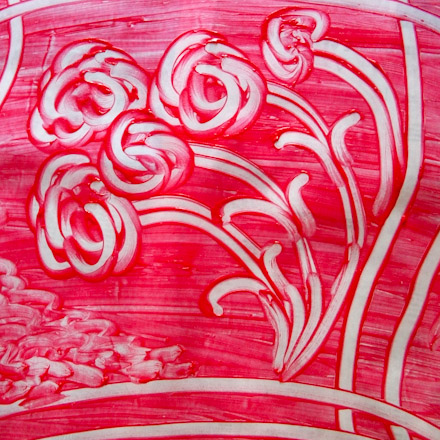
Making pictures with finger paints is very easy and is enjoyed by kids of all ages. This craft project goes over the basic steps for doing finger painting and gives tips to enhance your finger paint masterpieces. Your finger painting can be made with commercial or homemade finger paints. Check out the Finger Paint Recipe to make finger paints in a flash!
A bit of history: Modern-day finger painting was developed by Ruth Faison Shaw during the 1920s for the children in her school. She was looking for a more imaginative way for children to express themselves. "Finger paints are direct descendants of mud pies. All I have done is add the rainbow," said Shaw. She developed a paint that washes off easily, feels like mud to the touch, spreads smoothly, and does not dry too quickly. It was basically liquid starch mixed with dry tempera (ground pigment) or crumbled chalk.
Finger painting isn't just for the younger crowd. Join in with the kids and see how much fun it can be to use your fingers and hands to create images.
Related craft: Kid's (and adults) can make delightful Bubble Print Paper while blowing bubbles.
Cut a sheet of freezer paper that is at least 16" by 22" (40 by 55 centimeters). If needed, cover your work surface with plastic sheeting—finger painting is wet and sloppy!
Wet both sides of the paper thoroughly using a damp sponge, or wet the paper under a running faucet. Place the shiny side of the paper up. You can work on either the dull or shiny side of the paper, or use shiny white shelf paper. You will get different results with each side of the paper and each type of paper. Aunt Annie likes the shiny side of freezer wrap because the paint slides over it smoothly.
Note: There are also special finger painting papers with a glazed surface to hold the paint. They are available at school supply stores.
Color is mixed into the liquid starch on the wet paper. While you can pre-mix finger paint colors in jars or use commercial finger paints, you will get better shading results by mixing the colors into the starch on the paper. Pour one tablespoon (15 ml) of liquid starch mixture on the paper, then add paint to get the color desired. Use anywhere from 2 drops to 1 teaspoon of paint. Mix the color into the starch, then spread the paint evenly across the paper using the palm of the hand or the forearm.
For smaller paper sizes, reduce the amount of paint used. Paint applied too thickly can crack or peel when dry.
Use your fingers and the sides of your hands to make designs in the paint. You can erase the design and start over many times. If the paint becomes dry, squeeze a few drops of water from the sponge onto the paper and keep going!
When your painting is finished, lift it by two corners and place it flat on a newspaper to dry. If the paper curls, weigh down the sides with coins or washers. You can press dry paintings with a hot iron on the underside to make them lie flat.
Tips:That's it! What will you do with
your finger painting?
